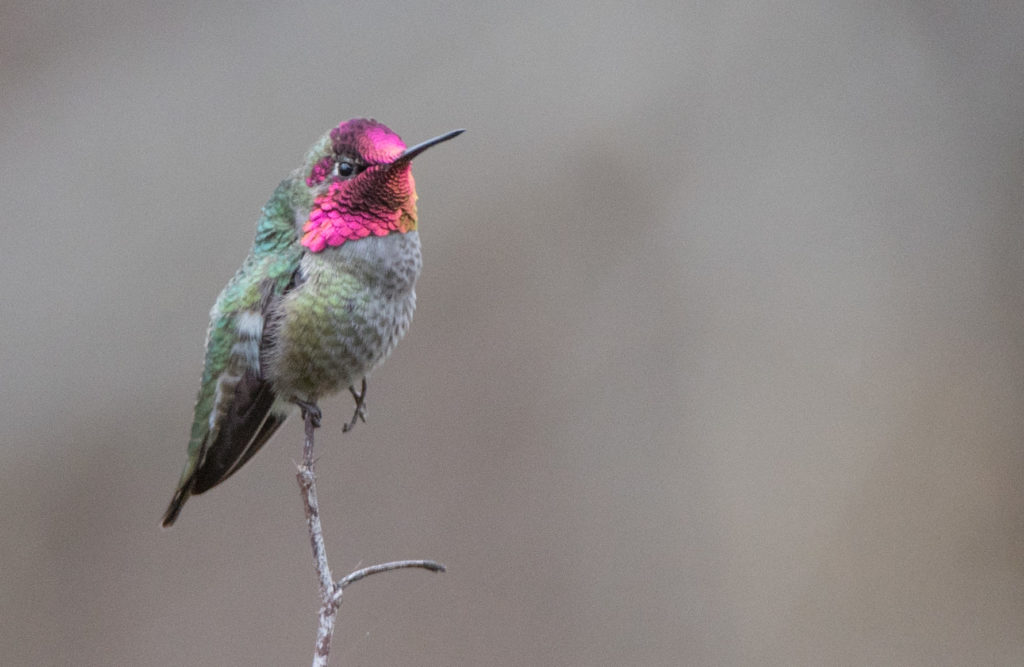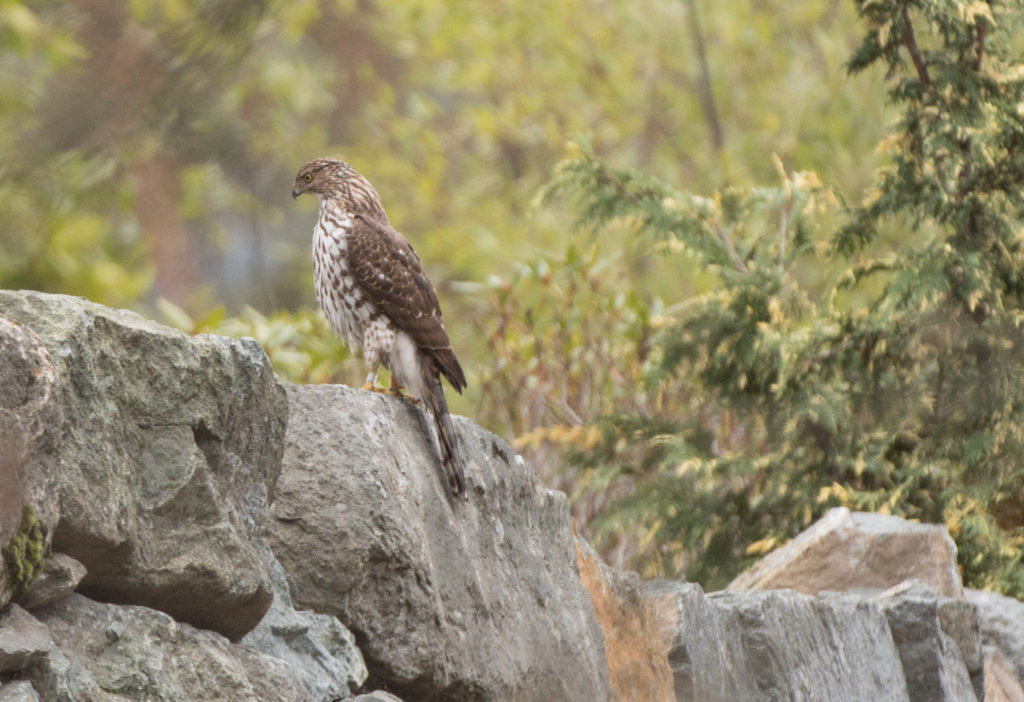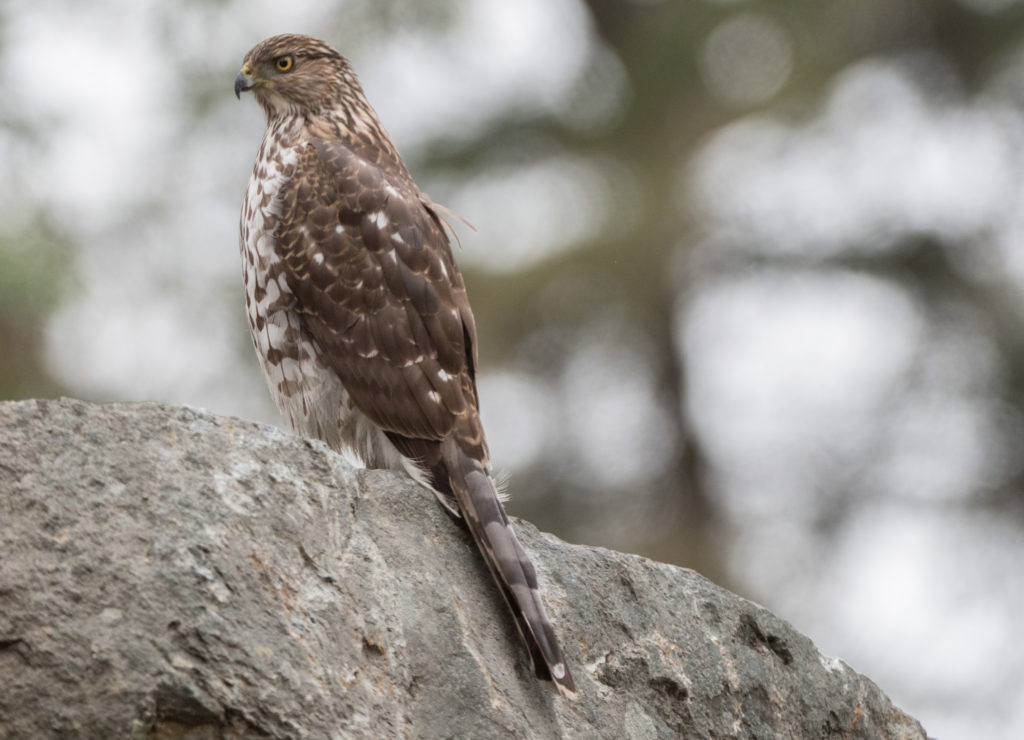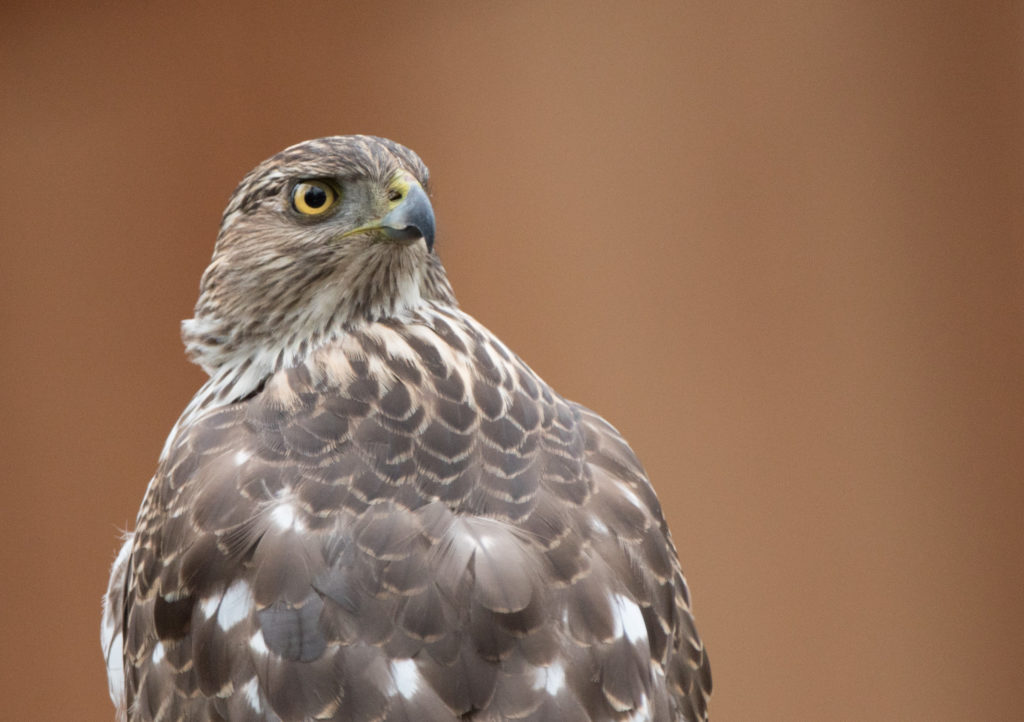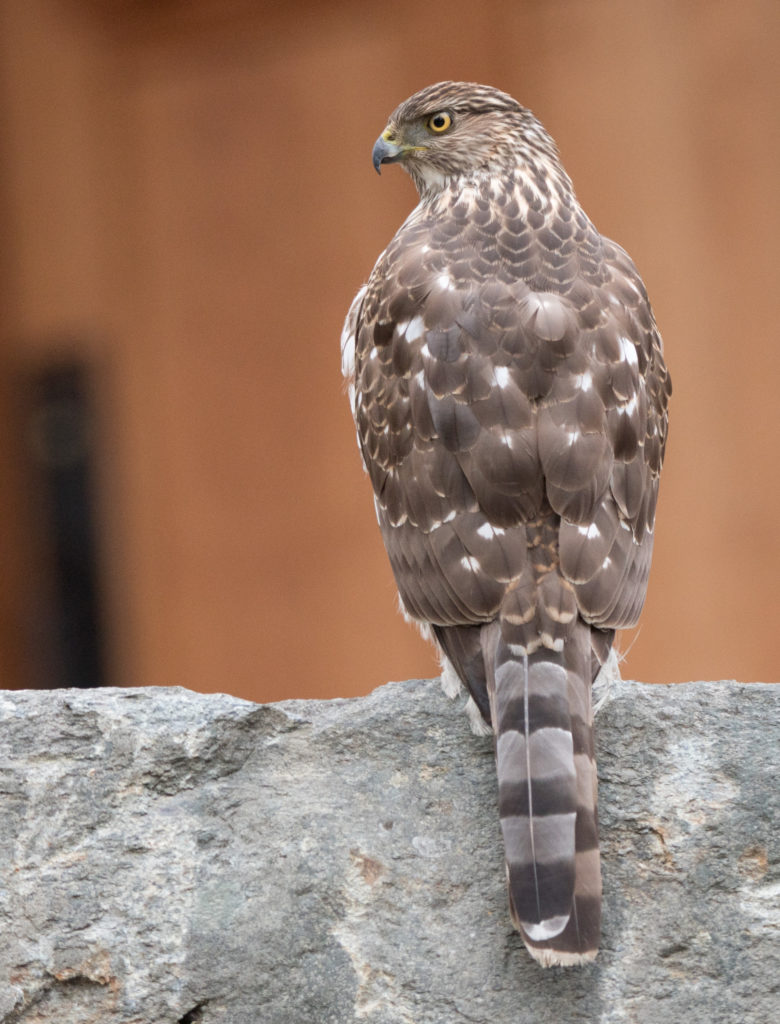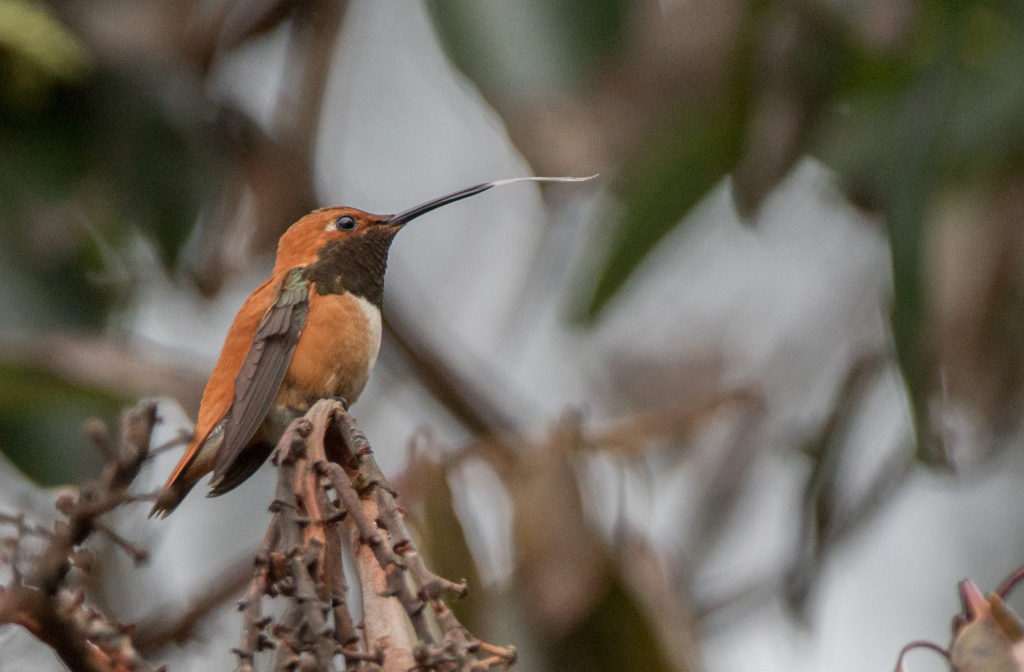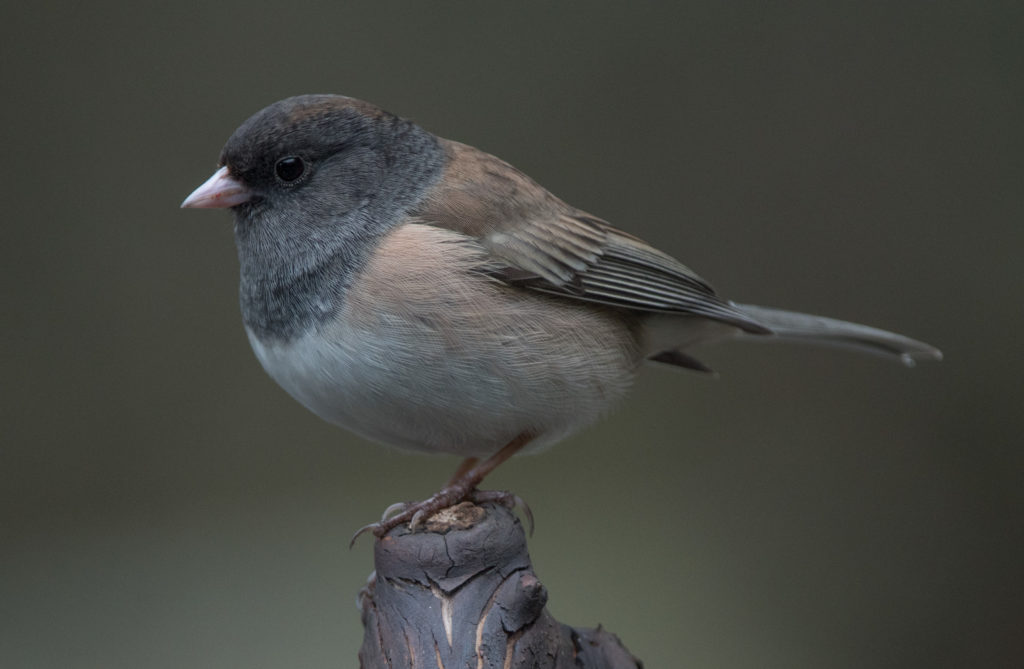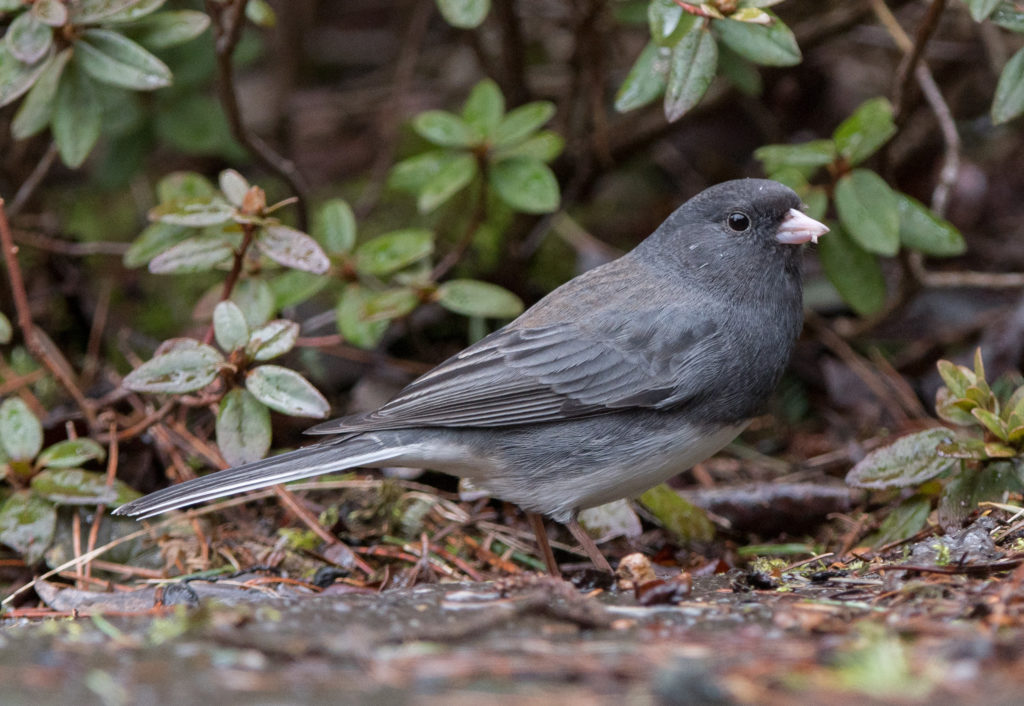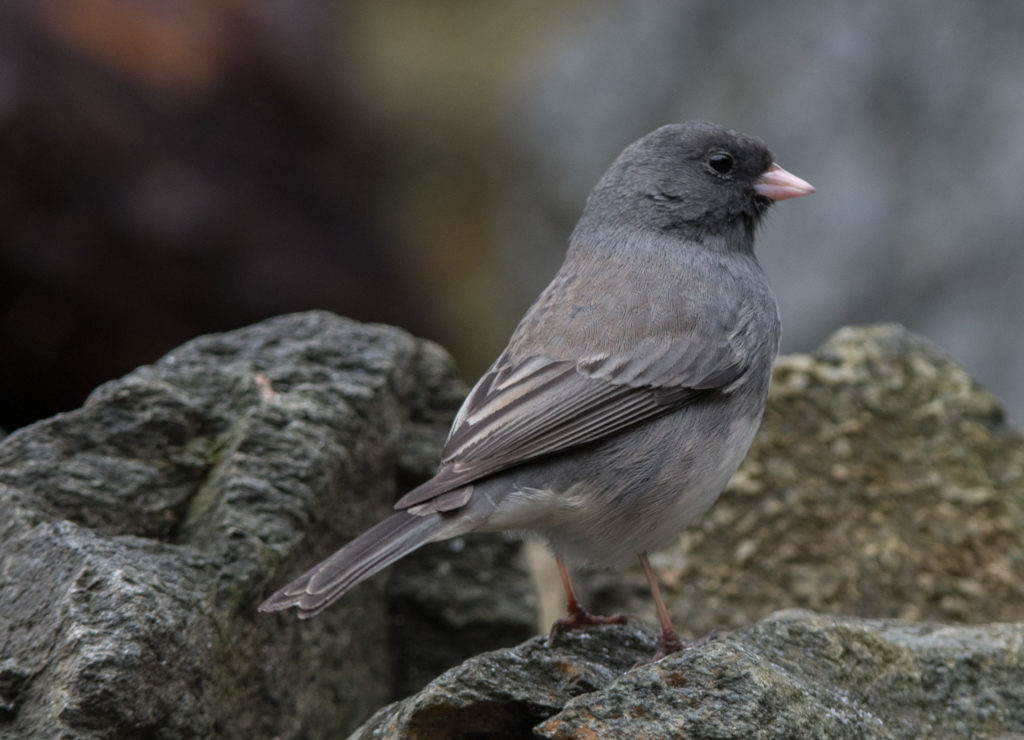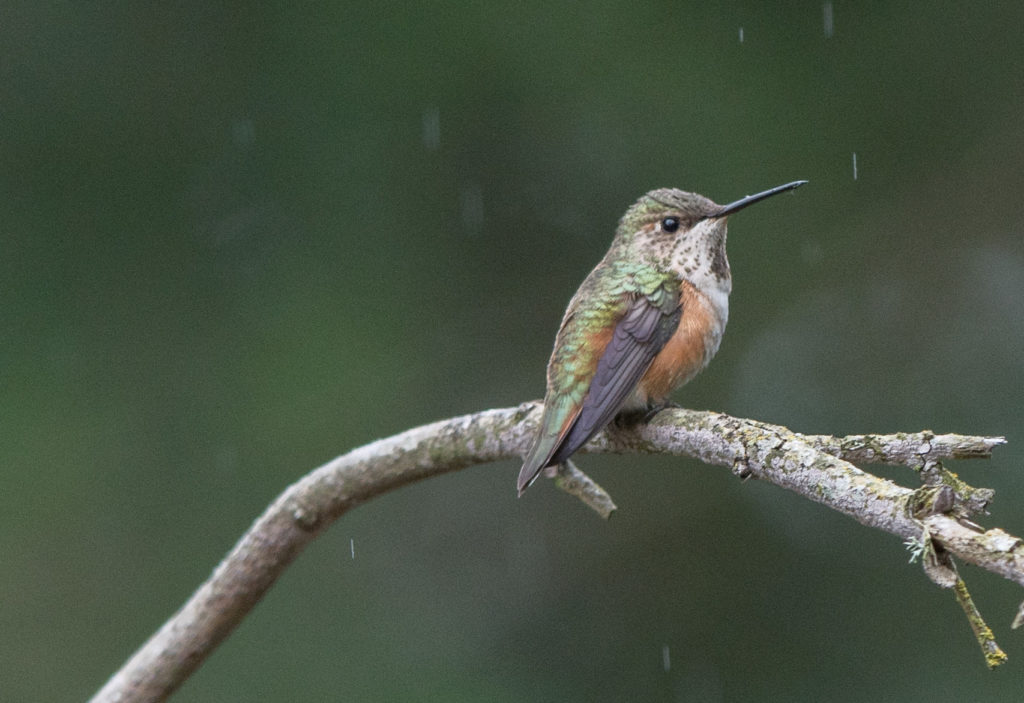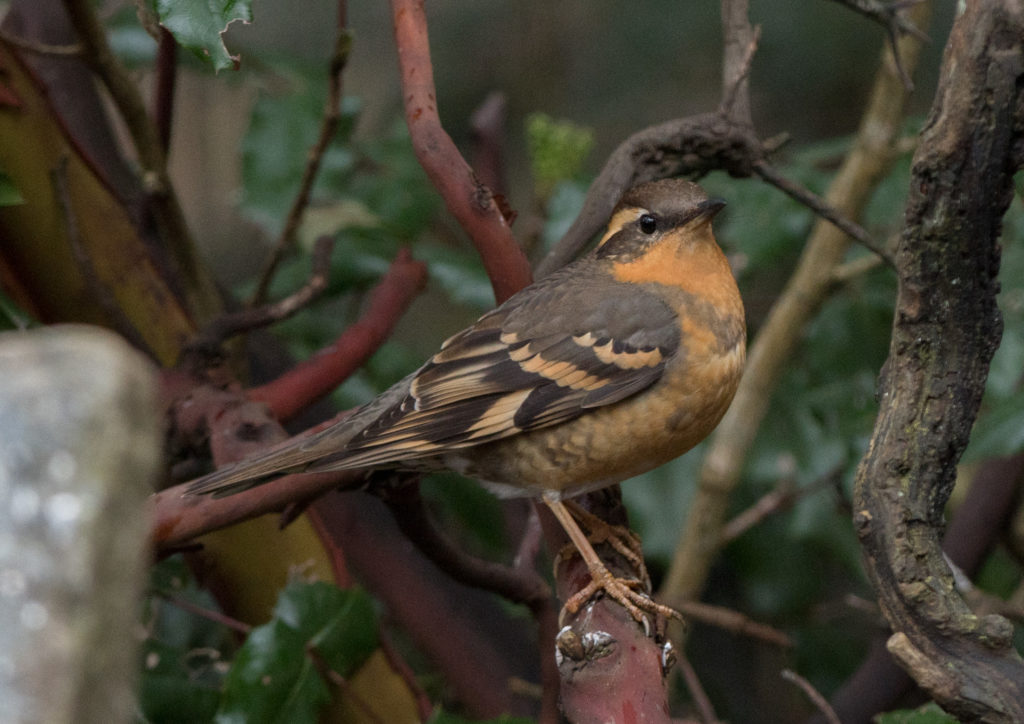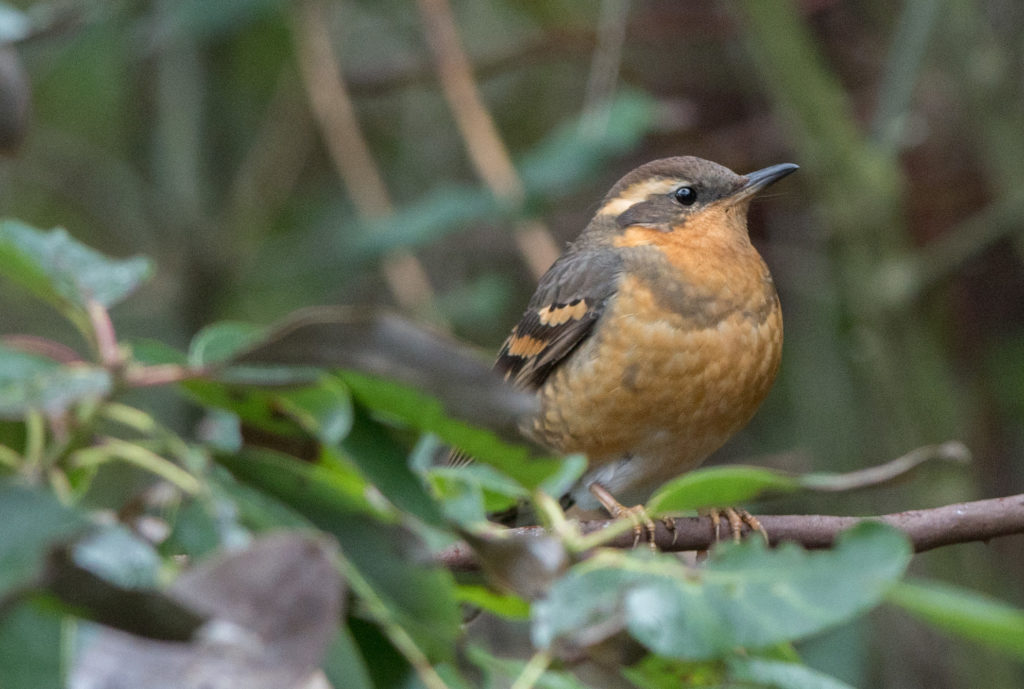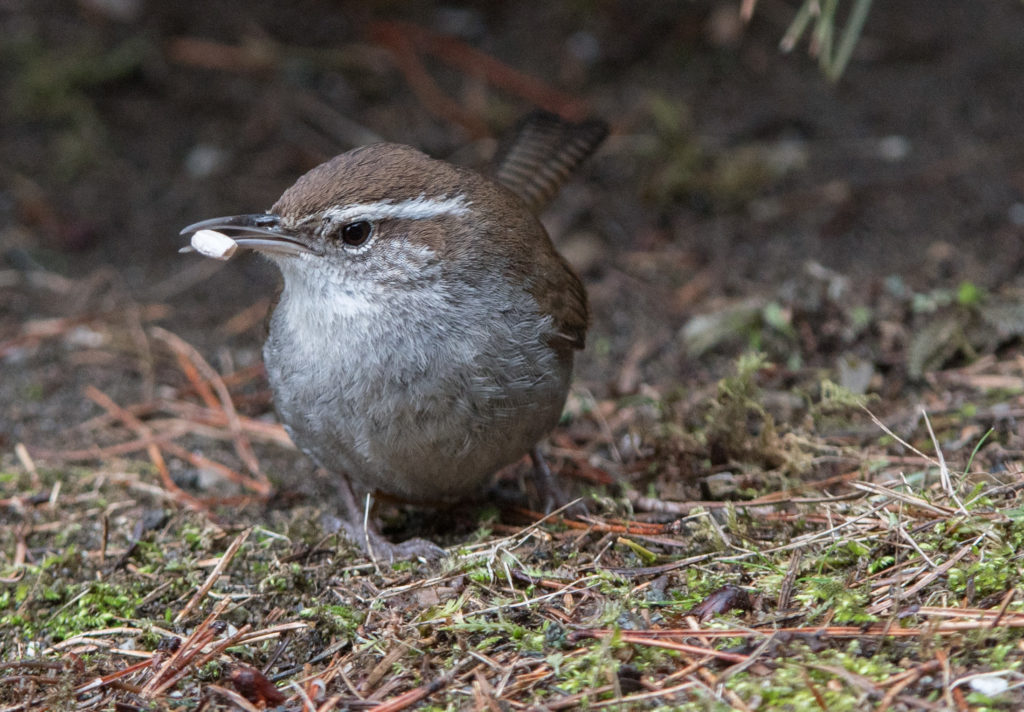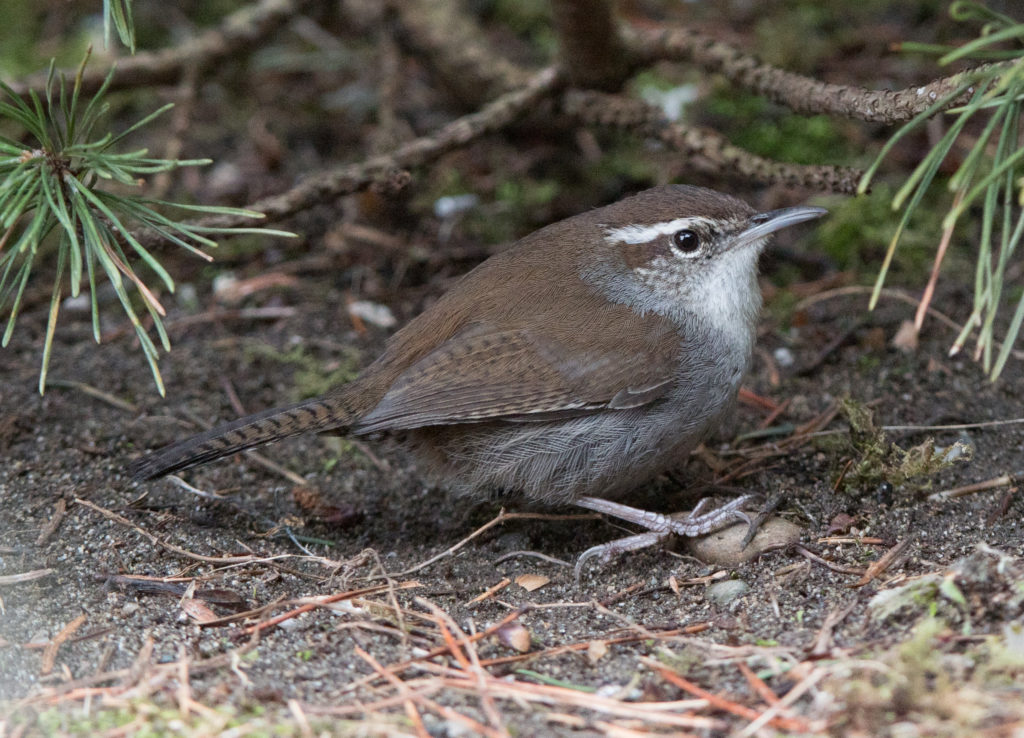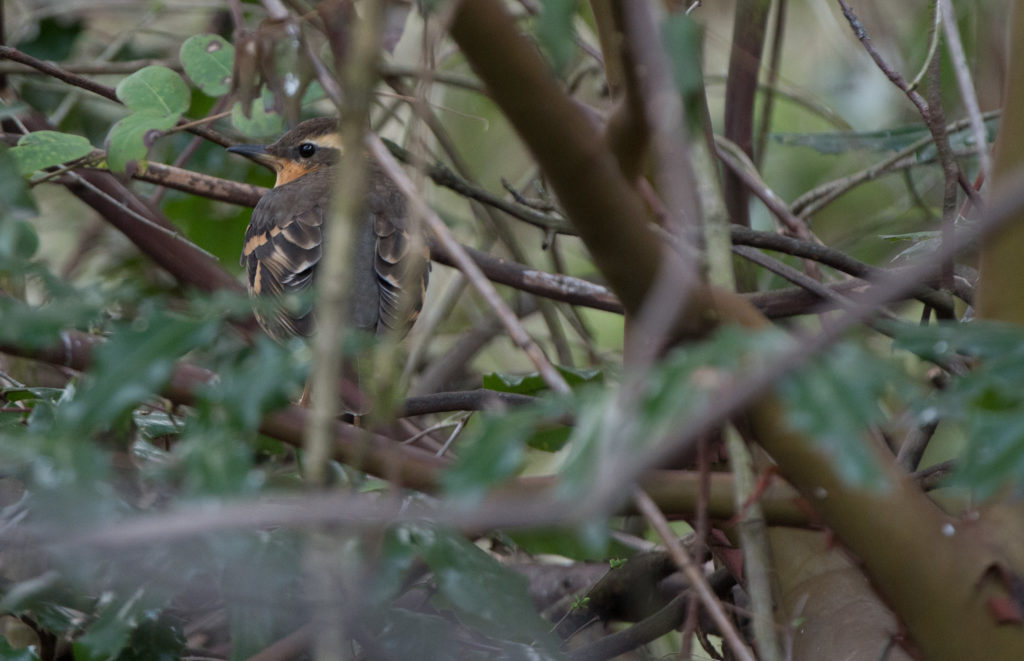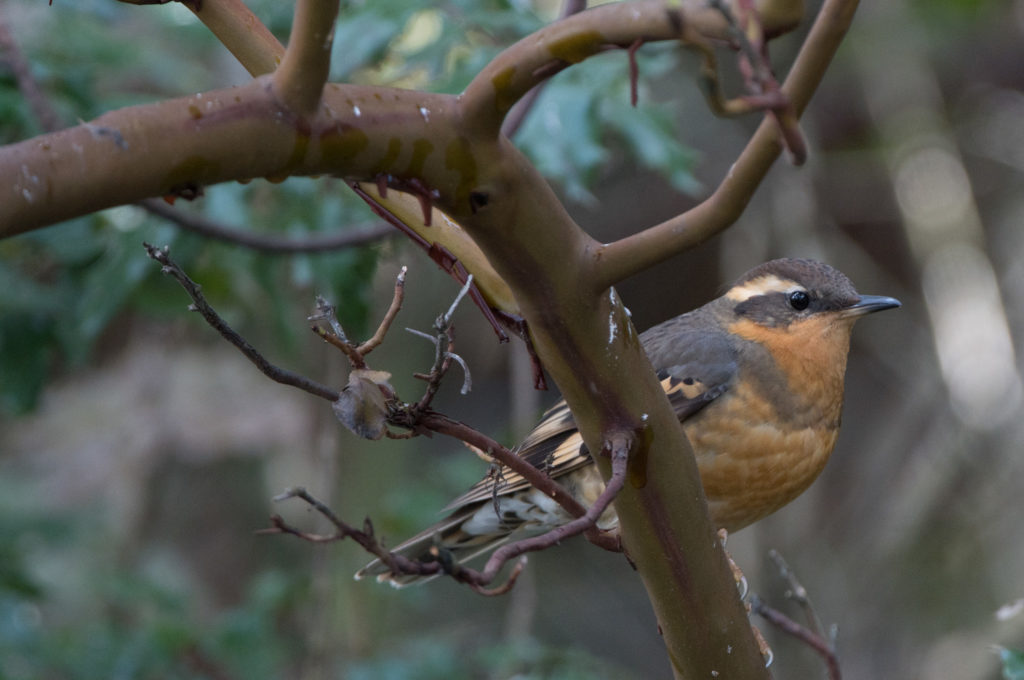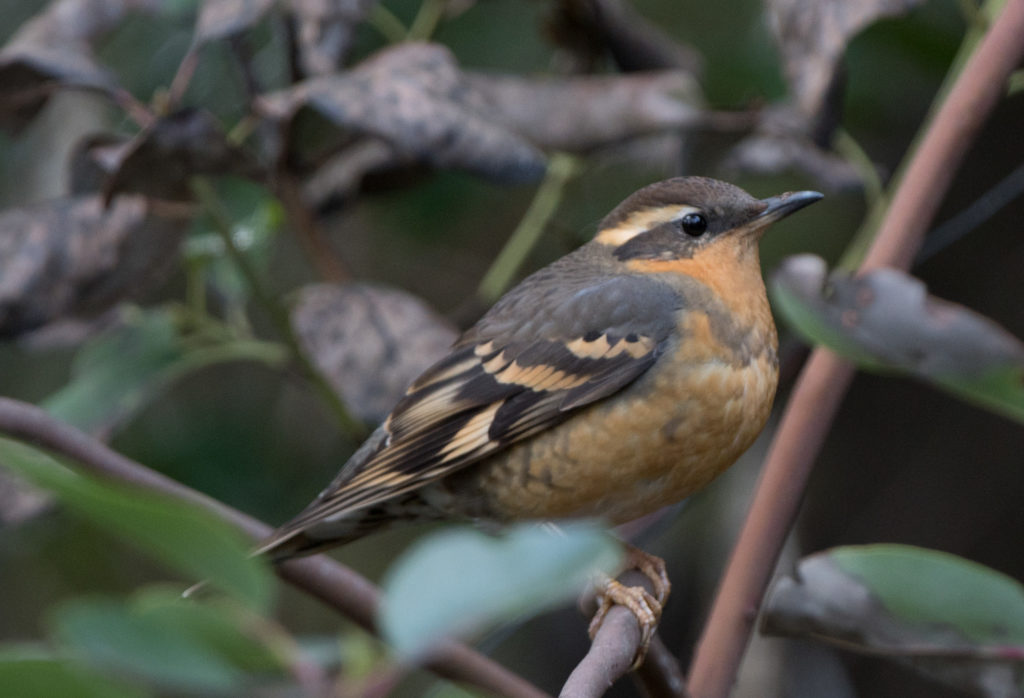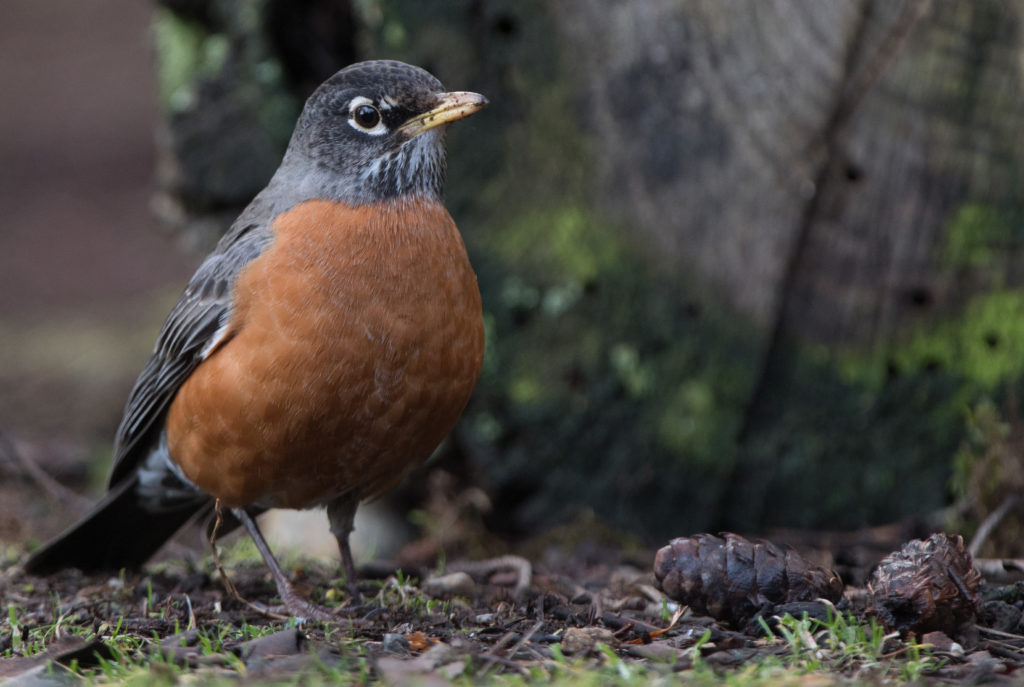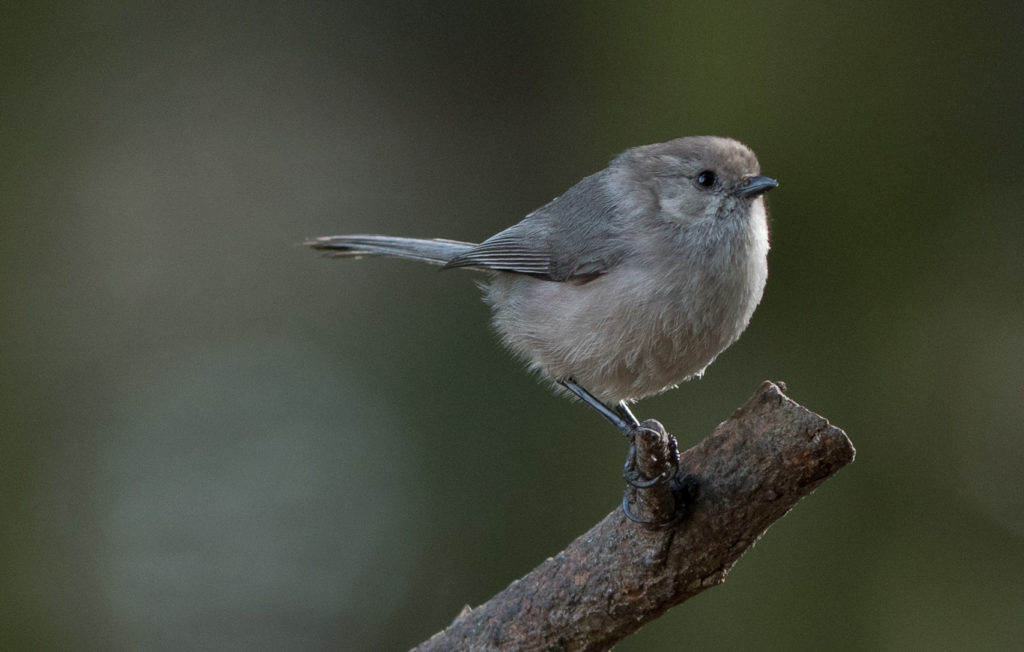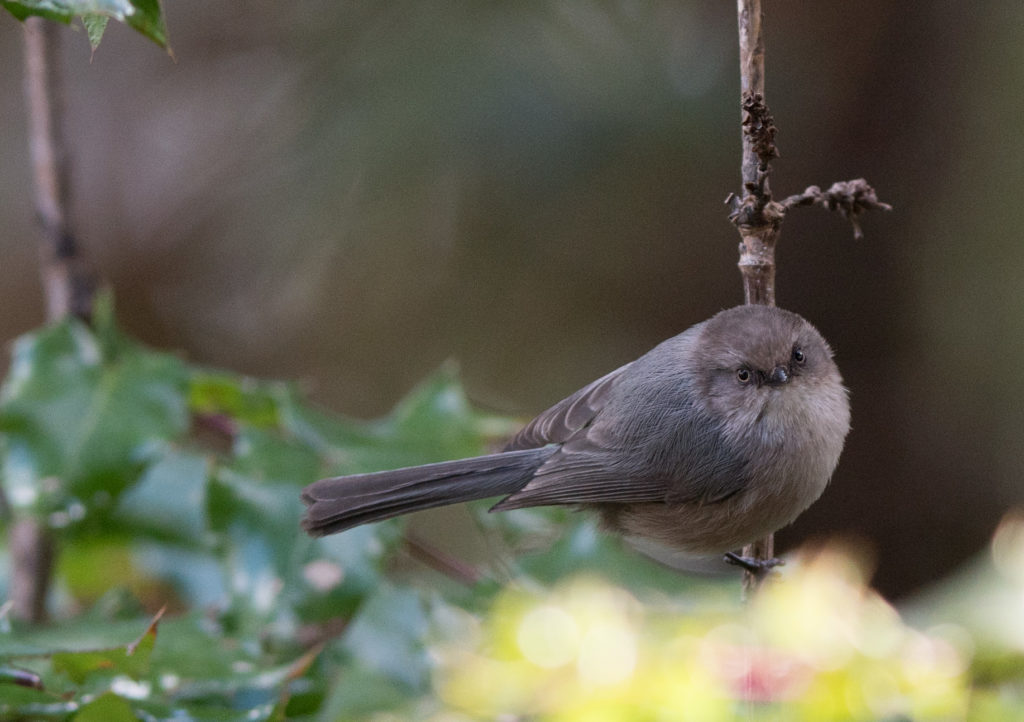March 12, 2017 didn’t look promising for birding, but I decided to give it a try anyway. Things were no going well until I noticed this male Anna’s hummingbird in our Cap Sante wetland. I took many photos while it surveyed its domain from the top of a very small twig. Some Anna’s hummingbirds are year-round residents in this area.
I then spent a little time at the Cap Sante Marina but the tide was out and the five Goldeneyes (one male and five females) I found in the marina weren’t close enough for photos. I then returned to the wetland and while circumnavigating it some movement on the other side caught my eye. I looked through my lens and saw an accipiter sitting on a neighbor’s rock wall about 50 yards away.
After watching it for several minutes it occurred to me that I might be able to get closer, and though I had little hope I also decided I had nothing to lose. I drove around to just below the accipiter and began taking photos. I took photos for probably at least 20 minutes and finally decided I had nothing else to gain and so left for home.
It had been a good day, with excellent photos of a bird near the top of the food chain and of another at the very bottom… and the photos were taken within 100 yards of each other!
While I was processing the photos in my office, I saw a flock of about 7-8 Cedar waxwings fly into the madrona tree in our front yard. I grabbed my camera again and went outside but failed to get any photos of the waxwings. However our male Rufous hummingbird (which arrived on the same day as our first female, March 7) was back in the yard and I took several photos of it under less-than-optimum circumstances, but… in one of the photos the hummingbird had its tongue out. Of all the hummingbird photos I’ve ever taken, this is the best photo of a hummingbird tongue I’ve ever obtained.
We’re still overrun with Dark-eyed (Oregon) juncos and I just can’t help but admire the plumage pattern on the birds. So here is a photo I took of one very late in the afternoon. Lately they’ve begun chasing each other around the yard. It won’t be long before the juncos are headed north and to higher elevations for their breeding season. The juncos are ground nesters, and over the years I’ve found two nests. One was under a clump of grass and the other under a Sword fern in Washington Park. Last year we had one pair that stayed for the summer, but they ended up raising a Brown-headed cowbird. 🙁

